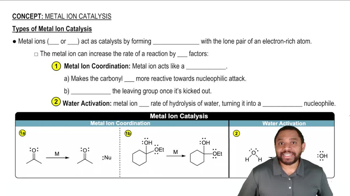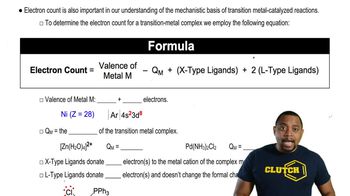What is the major product of the reaction of 1 mol of propyne with each of the following reagents?
j. the product of part i followed by 1-chloropropane

 Verified step by step guidance
Verified step by step guidance Verified video answer for a similar problem:
Verified video answer for a similar problem:



 4:19m
4:19mMaster Understanding how to convert terminal alkynes to alkynides. with a bite sized video explanation from Johnny
Start learning